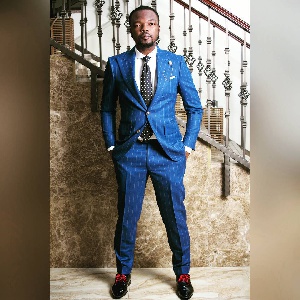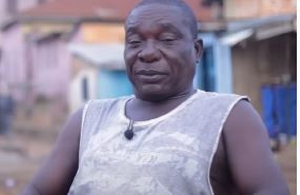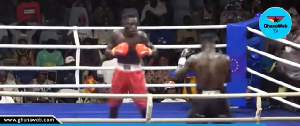- Home - Entertainment
- Lifestyle News
- Entertainment Videos | TV
- Year In Review
- Music News
- Entertainers
- Entertainment Archive
- Entertainment Photos
- Jokes
- Entertainment Headlines
- Ameyaw Debrah
- Brown GH
- Celebrities Buzz
- GH Base
- Ghana Celebrities
- Gh Gossip
- GH Page
- GH Splash
- Hot Gossip GH
- YEN

Fashion of Tuesday, 14 July 2015
Source: Kofi Okyere Darko
Style defined by KOD: 5 Things to Look for When Buying a Man’s Suit
Are you a lady or a man, wondering how to go about buying the perfect suit for that special ocassion, then Ghanaian fashionista, Kofi Okyere Darko has some good ideas for you.
5 Things to Look for When Buying a Men’s Suit
We all know that buying a suit is a big deal. It may be your first suit after graduation or a new suit for a wedding; whatever the occasion you want to get it right.
There are a few things to bear in mind before purchasing, and hopefully these tips will make sure you get the suit that is right for you.
Know Your Size
This is very important and something that you can measure yourself. When spending such an amount on a new suit, you will need to make sure it fits like a glove. If buying online, make sure you take a look at the size guide and then measure yourself against it.
When looking for your chest size, measure it just under your arms and across your shoulder blades. Use a flexible measuring tape and hold it level, remembering not to hold your breath, ensuring you measure the shoulder blades and the fullest part of the chest. Getting the fit right is the most important element of your suit, as a suit that is too big or too small will not look right, and more importantly won’t feel right.
Shoulders
How to Measure: from the end of one shoulder to the other, where the seams will be.
For a perfect fitted suit, your shoulder pads will end where your shoulders do. This sounds simple enough, but you see a lot of people getting this wrong. If the shoulders don’t feel right, don’t buy it.
Trouser Length
How to measure: inside the leg, lowest point of your crotch, to where you would like the trousers to end.
Depending on the occasion, a different length is often required. For anything formal, i.e. Work, job interview, funeral, it is recommended that your trouser touches the shoe, just above where the foot begins.
A more modern look embraces a flash of sock, possibly for a garden party. Turn-ups are also back with force, and can look really cool with a pair of brogues. Remember to think about where it will receive most use before you make the purchase.
Sleeve Length
How to measure: Measure from where the seams on the shoulder meet to where you want the sleeve to end.
There is a conventional wisdom when it comes to sleeve length. Most people suggest that you should see between ¼ and an inch of cuff, although I think a little more can be stylish, especially with a good pair of cufflinks and a watch. Remember that your suit should be tight around the cuff. Too much gap gives the impression that you might be borrowing it from your dad…so make sure you get in touch with your tailor if you are experiencing this age old problem.
Vents on Jacket
The most common styles include:
European – Often regarded as the most stylish and fitted suit of them all, the Italian is often without vents, very slim and has a lowbutton stance.
American – Otherwise known as ‘the sack suit’, it’s very neutral, one
vent and straight hanging lines.
British – Often known as ‘Saville Row’ style, with two vents and more
shape than the American.
Tailoring
Remember, you don’t need to go to a top tailors to get a suit perfect
for you. There has been an emergence of buying able your designer suit
directly from a brand like Dan Morton Tailors or Royal Dennis from
Ghana.
If it doesn’t fit exactly, take it to a tailor who will often
modify it for a lot less than a top end suit shop would charge.
Shoulders, trouser length and cuffs are very difficult to get exactly
right, therefore finding a good tailor is essential.
Shorten the sleeves, hem the pants and tighten the waist and your suit should be
good for years.











